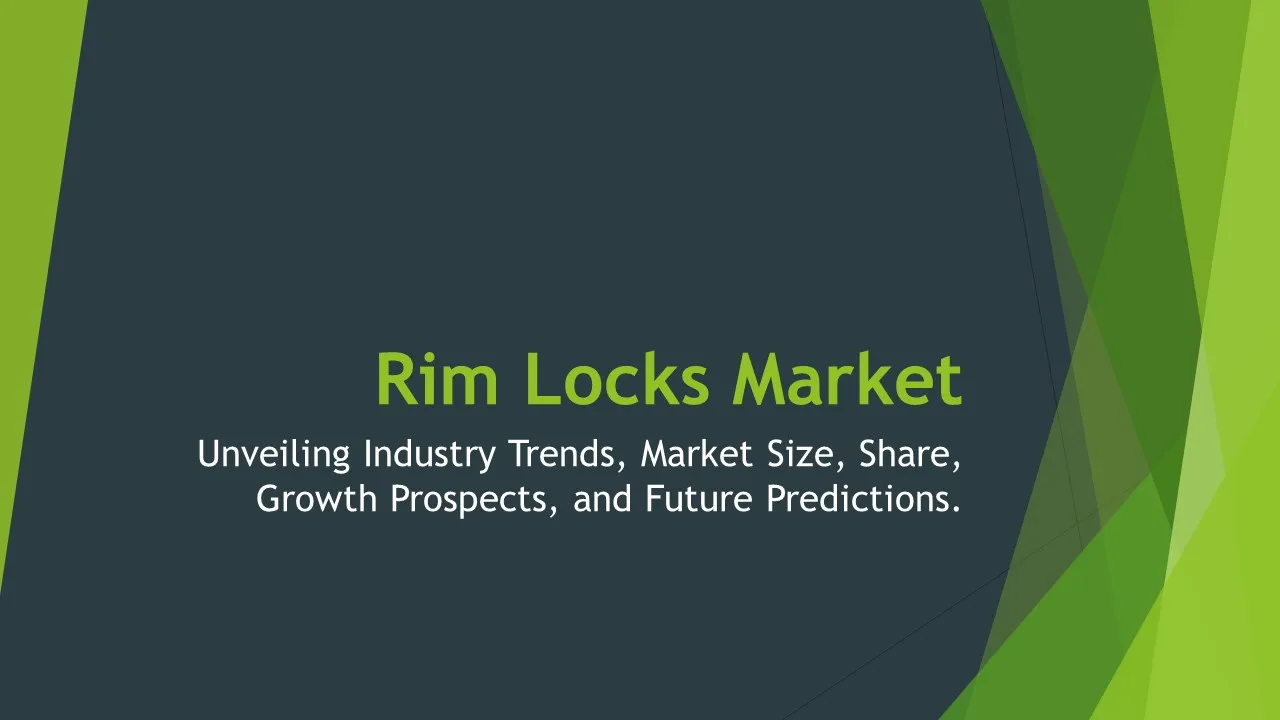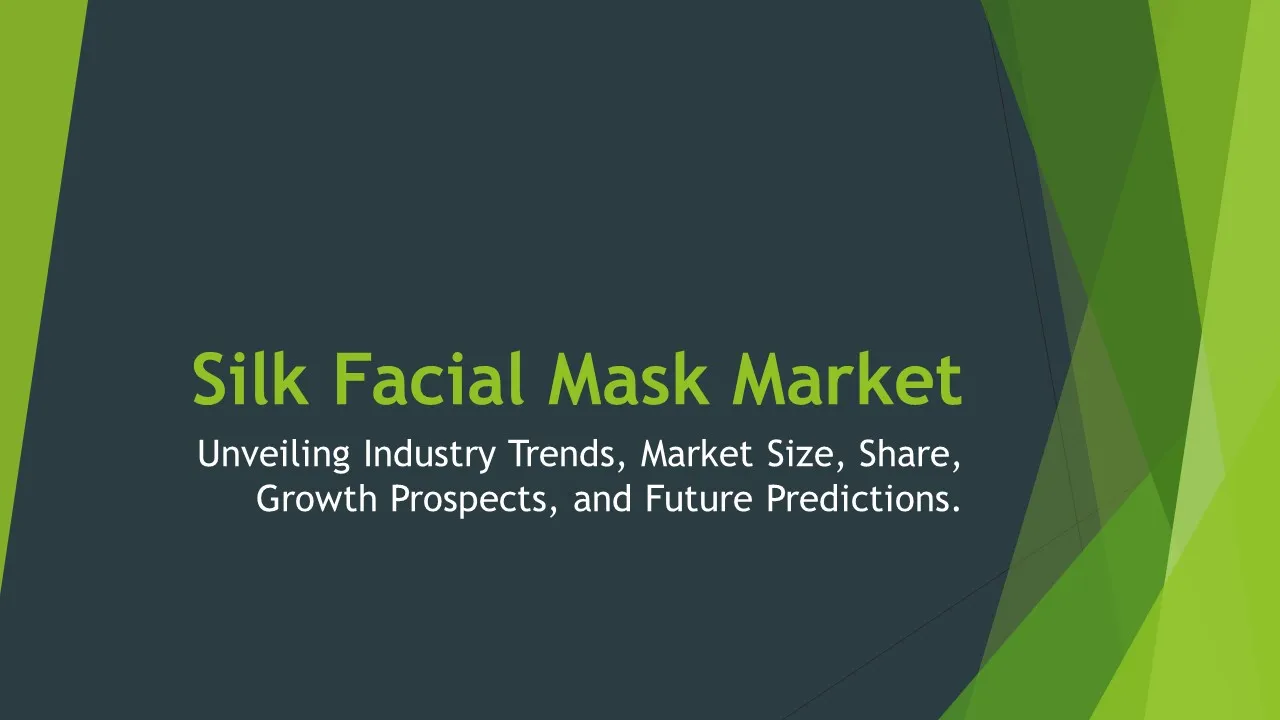High End Fashion
High End Fashion Market Segments - by Product Type (Apparel, Footwear, Accessories, Jewelry, Handbags), Price Range (Luxury, Designer, Haute Couture, Premium, Bridge), Consumer Demographics (Millennials, Generation X, Baby Boomers, Gen Z, Middle-aged), Distribution Channel (Offline Stores, Online Retail, Department Stores, Specialty Boutiques, Luxury Multi-brand Stores), and Region (North America, Europe, Asia Pacific, Middle East & Africa, Latin America) - Global Industry Analysis, Growth, Share, Size, Trends, and Forecast 2025-2035
- Report Preview
- Table Of Content
- Segments
- Methodology
High End Fashion Market Outlook
The global high-end fashion market is anticipated to reach approximately USD 450 billion by 2035, exhibiting a compound annual growth rate (CAGR) of about 6.8% from 2025 to 2035. This growth is primarily fueled by increasing disposable income among consumers, the burgeoning e-commerce sector, and a heightened interest in luxury living and high-quality products. Moreover, the rising influence of social media, celebrity endorsements, and fashion influencers has significantly driven consumer interest in premium brands, creating a more extensive customer base that values exclusivity and individuality. The growing trend of sustainability and ethical fashion is also shaping the landscape, as brands are increasingly aligning with consumer demands for products that reflect social responsibility and environmental consciousness.
Growth Factor of the Market
Several critical factors are propelling the growth of the high-end fashion market. Firstly, the increasing global wealth distribution has led to more consumers being able to afford luxury goods, particularly in developing markets such as Asia Pacific and Latin America. Secondly, the rapid expansion of e-commerce platforms has made luxury fashion more accessible to a broader audience, allowing consumers to purchase high-end products from anywhere in the world, thus breaking geographical barriers. Thirdly, the rising trend of personalization and customization in fashion attracts discerning customers who wish to express their individuality through unique products. Fourthly, innovative marketing strategies, including collaborations between high-end brands and popular influencers, have significantly boosted brand visibility and desirability. Lastly, the ongoing focus on sustainability and ethical production is resonating with a growing demographic of conscientious consumers, which is increasingly becoming a pivotal factor in purchasing decisions in the high-end fashion segment.
Key Highlights of the Market
- The high-end fashion market is projected to reach USD 450 billion by 2035.
- Asia Pacific is anticipated to emerge as a key growth region, significantly contributing to market expansion.
- Online retail channels are expected to witness the fastest growth rate due to rising e-commerce adoption.
- Millennials are becoming the primary consumers in the high-end fashion sector, driving trends and preferences.
- Sustainability and ethical fashion practices are gaining traction, influencing purchasing behavior.
By Product Type
Apparel:
Apparel remains the dominant segment within the high-end fashion market, encompassing a wide range of clothing options such as dresses, suits, outerwear, and casual wear. Luxury apparel is often characterized by exclusive designs, high-quality fabrics, and impeccable craftsmanship. The demand for premium apparel has surged as consumers look for unique pieces that not only enhance their wardrobe but also serve as a status symbol. Additionally, the rise of athleisure has introduced a new dimension to high-end apparel, blending luxury with comfort, catering to the evolving lifestyle preferences of consumers. Brands are increasingly leveraging innovative technology and design techniques to create standout apparel that resonates with fashion-forward consumers seeking exclusivity.
Footwear:
The footwear segment of the high-end fashion market has witnessed remarkable growth, driven by the demand for both style and functionality. High-end footwear encompasses luxury sneakers, elegant heels, and bespoke shoes crafted from premium materials. The importance of footwear in fashion has evolved, with consumers recognizing it as a critical accessory that can elevate an outfit. Furthermore, collaborations between luxury brands and renowned designers have resulted in limited-edition footwear lines, creating a buzz in the market. The increasing focus on comfort has also led to the popularity of high-end casual footwear, appealing to a broader audience who prioritize both aesthetics and wearability.
Accessories:
Accessories play a crucial role in the high-end fashion market, adding a touch of elegance and sophistication to any outfit. This segment includes luxury items such as scarves, belts, eyewear, and watches, which often serve as statement pieces. The growing interest in accessorizing has led to increased sales in this segment, as consumers seek to complement their apparel with unique and artisanal pieces. Moreover, brands are focusing on innovative designs and craftsmanship to differentiate their accessories in a crowded marketplace. The emphasis on personalization, such as monogramming and bespoke options, has also enhanced the appeal of high-end accessories among discerning customers.
Jewelry:
Jewelry is a significant segment within the high-end fashion market, often associated with luxury, heritage, and craftsmanship. High-end jewelry ranges from elegant necklaces and bracelets to intricate rings and earrings, often featuring precious metals and gemstones. The market for luxury jewelry has expanded as consumers increasingly view jewelry not just as adornment but also as a form of investment. The growing trend of personalized and customized jewelry has resonated with consumers seeking unique pieces that reflect their style and narrative. Furthermore, the rise of social media has amplified the visibility of luxury jewelry brands, encouraging consumers to invest in high-end pieces that symbolize status and achievement.
Handbags:
Handbags are a quintessential element of the high-end fashion market, serving both functional and aesthetic purposes. This segment includes luxury totes, clutches, and crossbody bags, often characterized by designer logos, high-quality materials, and meticulous craftsmanship. The status associated with luxury handbags has made them highly sought after, with many consumers viewing them as a symbol of prestige and wealth. The trend of limited-edition releases and collaborations with popular designers has further fueled the demand for high-end handbags, creating a sense of urgency among consumers. Additionally, the rise of sustainable practices in the production of handbags is attracting environmentally conscious consumers who wish to invest in luxury items that align with their values.
By Price Range
Luxury:
The luxury price range in the high-end fashion market includes products that are often exclusive, with limited availability and a high price point. This segment comprises iconic brands that have established a legacy of luxury and craftsmanship. Luxury products are typically characterized by their use of premium materials, exceptional quality, and distinctive designs. The allure of luxury fashion lies in its ability to provide consumers with a sense of exclusivity and status. As the global economy continues to grow, more consumers are willing to invest in luxury items, making this segment a critical driver of market growth.
Designer:
Designer fashion encompasses products created by well-known designers and fashion houses, often incorporating unique aesthetics and innovative design elements. This price range attracts consumers seeking high-quality fashion that reflects both current trends and timeless elegance. Designer items are often seen as a mark of sophistication, appealing to fashion enthusiasts who appreciate artistry and creativity. The segment has adapted to changing consumer demands, with a notable increase in designer collaborations that make high-fashion items more accessible to a broader audience without compromising on quality and design.
Haute Couture:
Haute couture represents the pinnacle of high-end fashion, characterized by custom-fitted, handcrafted garments made from the finest materials. This exclusive segment is reserved for the most affluent consumers who seek extraordinary, one-of-a-kind pieces that are often showcased on runways. Haute couture is not just about fashion; it embodies artistry and craftsmanship that requires significant investment in time and resources. As such, the market for haute couture remains relatively niche but continues to attract wealthy clients who prioritize bespoke creations and unique fashion experiences.
Premium:
The premium price range includes high-quality products that offer a balance between luxury and accessibility. This segment appeals to a broad audience, including affluent consumers who desire the prestige of high-end fashion without the extreme price tags associated with luxury items. Premium products often utilize high-quality materials and offer distinctive designs, making them attractive options for consumers looking to elevate their style. The shift towards quality over quantity has contributed to the growth of the premium segment, as consumers increasingly prioritize investing in long-lasting, fashionable pieces.
Bridge:
The bridge price range serves as an entry point into high-end fashion, featuring products that are stylish yet more affordable than luxury and designer items. This segment has gained traction among a younger demographic, including millennials and Gen Z, who seek fashionable options that allow them to express their style without breaking the bank. Brands in the bridge segment focus on trend-driven designs and collaborations with mainstream retailers, making high-end aesthetics more accessible. As consumer behavior continues to evolve, the bridge segment is expected to experience significant growth, particularly as fashion-forward youth embrace the category.
By Consumer Demographics
Millennials:
Millennials constitute a significant portion of the high-end fashion market, driven by their desire for self-expression and unique styles. This demographic values experiences over material possessions, leading to increased spending on luxury fashion that aligns with their individuality and lifestyle. They are also more inclined to support brands that demonstrate social responsibility and sustainability, making ethical fashion an essential consideration. As digital natives, millennials are influenced by social media platforms, where they discover and engage with high-end fashion brands, further driving their purchasing decisions. Brands that effectively communicate their values and connect with millennials through innovative marketing will likely thrive in this competitive landscape.
Generation X:
Generation X, often viewed as the bridge between traditional and modern consumer behaviors, holds a unique position within the high-end fashion market. This demographic typically has higher disposable incomes and a preference for quality over quantity. They are inclined to invest in classic, timeless pieces that reflect their established lifestyles. Generation X is also more loyal to brands that resonate with their values and understand their expectations. As they navigate the world of luxury fashion, they continue to prioritize practicality, comfort, and style, making them an essential target for brands looking to establish a lasting relationship with discerning consumers.
Baby Boomers:
Baby Boomers represent a wealthier segment of consumers in the high-end fashion market, characterized by their purchasing power and loyalty to established luxury brands. This demographic appreciates quality craftsmanship and timeless elegance, often seeking out products that have stood the test of time. Baby Boomers tend to favor traditional retail experiences and value personal customer service, making brick-and-mortar stores vital for this group. As they seek to curate their wardrobes with high-end fashion, brands that prioritize personalized shopping experiences and offer classic styles will appeal to this discerning demographic.
Gen Z:
Gen Z is emerging as a key demographic within the high-end fashion market, driven by their affinity for digital experiences and social media influence. This generation values authenticity, diversity, and sustainability, making ethical fashion an essential aspect of their purchasing decisions. Gen Z is more likely to experiment with fashion and embrace unique styles that allow them to express their individuality. Their purchasing behavior is heavily influenced by trends on social media, where they discover and interact with high-end fashion brands. Brands that are able to engage and resonate with Gen Z through innovative storytelling and genuine connections will find growth opportunities within this segment.
Middle-aged:
The middle-aged demographic is increasingly significant in the high-end fashion market, characterized by stability and a desire for high-quality products. This segment often seeks items that offer both style and practicality, prioritizing comfort alongside aesthetics. Middle-aged consumers tend to invest in classic, versatile pieces that can transition seamlessly across various occasions. Furthermore, this demographic places a strong emphasis on customer service and personalized shopping experiences, making it essential for brands to cater to their preferences. As the middle-aged population continues to grow, their influence in the high-end fashion market will likely expand, presenting opportunities for brands to connect with them through tailored marketing strategies.
By Distribution Channel
Offline Stores:
Offline stores play a crucial role in the high-end fashion market, offering consumers a tactile shopping experience that allows them to interact with products firsthand. Luxury boutiques and flagship stores provide an immersive environment where customers can appreciate the quality, craftsmanship, and exclusivity of high-end fashion items. The personalized customer service typically associated with offline shopping enhances the overall experience, fostering brand loyalty among discerning consumers. Despite the growth of e-commerce, offline stores remain vital in reinforcing brand prestige and allowing customers to engage with the luxury shopping experience.
Online Retail:
Online retail has transformed the high-end fashion market, providing brands with the opportunity to reach a global audience. The convenience of online shopping appeals to consumers seeking accessibility and variety, allowing them to explore luxury products from the comfort of their homes. E-commerce platforms have made it easier for consumers to discover new brands, compare prices, and shop for a wide range of luxury items. Additionally, the rise of social media and influencer marketing has further encouraged online purchases, prompting brands to invest in their digital presence and optimize their online shopping experiences to cater to the evolving preferences of consumers.
Department Stores:
Department stores serve as an essential distribution channel in the high-end fashion market, offering a curated selection of luxury brands under one roof. This channel allows consumers to explore various high-end fashion options in a single shopping experience, combining convenience with a diverse range of products. Department stores often host exclusive events and collaborations with luxury brands, enhancing their appeal to affluent consumers. As the retail landscape continues to evolve, department stores are adapting by focusing on providing personalized shopping experiences and exclusive collections that attract high-end clientele.
Specialty Boutiques:
Specialty boutiques are a vital segment in the high-end fashion market, often representing niche luxury brands that cater to specific tastes and preferences. These boutiques offer a personalized shopping experience, allowing consumers to discover unique products that may not be available in larger retail settings. The exclusivity and curated selection found in specialty boutiques resonate with consumers who appreciate individuality and artisanal craftsmanship. As consumers increasingly seek out unique and authentic experiences, specialty boutiques are likely to remain a popular choice among discerning shoppers looking for high-end fashion.
Luxury Multi-brand Stores:
Luxury multi-brand stores provide a platform for various high-end fashion brands to coexist, offering consumers a diverse array of luxury items in one location. This distribution channel allows shoppers to explore different brands, styles, and price ranges while enjoying a cohesive shopping experience. Luxury multi-brand stores often emphasize exclusivity and personalization, creating an environment where consumers can make informed purchasing decisions. As the demand for diverse luxury options continues to grow, these stores play a critical role in enhancing consumer exposure to high-end fashion and catering to evolving preferences.
By Region
The high-end fashion market is experiencing notable growth across various regions, with North America and Europe leading the charge. North America, particularly the United States, holds a substantial share of the market, characterized by a high concentration of luxury consumers and a strong affinity for designer brands. The market in this region is projected to grow at a CAGR of 6.5% during the forecast period, driven by increasing disposable income and changing consumer preferences towards premium products. In Europe, renowned fashion capitals such as Paris, Milan, and London continue to dominate the luxury fashion landscape, attracting affluent consumers and international tourists seeking high-end goods. The European market is also anticipated to witness steady growth, fueled by the ongoing demand for luxury apparel and accessories.
Meanwhile, the Asia Pacific region is emerging as a formidable player in the high-end fashion market, with rapid urbanization and rising disposable incomes leading to significant increases in luxury spending. Countries like China and India are witnessing a surge in affluent consumers who are keen to invest in luxury fashion, contributing to the region's projected CAGR of 8.2% during the forecast period. The growing influence of social media and the increasing prevalence of e-commerce in Asia are also reshaping consumer behavior, encouraging a shift toward online shopping for luxury items. The Middle East and Africa, while currently smaller markets, are experiencing growth as affluent consumers in these regions seek high-end fashion products, particularly in urban centers where luxury retail continues to expand.
Opportunities
The high-end fashion market presents significant opportunities for growth, particularly as consumer attitudes towards luxury evolve. One of the most prominent opportunities lies in the increasing demand for sustainable and ethically produced fashion. Consumers are becoming more discerning about the brands they support, and those that demonstrate a commitment to sustainability are likely to gain a competitive edge. By investing in eco-friendly materials and transparent supply chains, high-end fashion brands can appeal to the growing demographic of environmentally conscious consumers. Additionally, brands that emphasize storytelling and authentic connections with consumers will enhance their brand loyalty and long-term success. The rise of digital platforms and social media also offers unique opportunities for brands to engage with customers, fostering a deeper connection that transcends traditional retail experiences.
Furthermore, the expansion of e-commerce and online retail channels presents significant avenues for growth in the high-end fashion market. As digital shopping becomes increasingly popular, brands that prioritize user experience, mobile compatibility, and personalized marketing strategies will likely see heightened engagement and conversion rates. The integration of augmented reality and virtual try-on technologies can enhance online shopping experiences, allowing consumers to visualize how products will fit into their lives. Additionally, international markets, particularly in Asia, offer substantial opportunities for expansion as rising middle classes and increasing disposable incomes fuel demand for luxury goods. By strategically targeting and customizing offerings for these diverse markets, high-end fashion brands can position themselves for sustained growth in the coming years.
Threats
Despite the promising growth prospects for the high-end fashion market, several threats could hinder its trajectory. One of the most concerning threats is the impact of economic fluctuations on consumer spending. Economic downturns can significantly reduce disposable income and consumer confidence, leading to decreased spending on luxury items. Additionally, the rapid pace of fashion trends and consumer preferences may pose a challenge for high-end brands striving to remain relevant and competitive in a constantly evolving market. The proliferation of counterfeit products also threatens brand integrity, as consumers may unknowingly purchase fake luxury goods, eroding trust in established brands. Furthermore, the ongoing global push for sustainability may create pressure on some luxury companies that are slow to adapt to new ethical standards.
Another considerable restrainer for the high-end fashion market is the increasing competition from fast fashion brands that offer trendy styles at lower price points. While these brands may not offer the same level of quality or exclusivity, their ability to rapidly produce and distribute new collections appeals to a broad audience, particularly younger consumers who prioritize trends over brand loyalty. This competition can pose challenges for high-end brands as they navigate price sensitivity and consumer expectations. Additionally, the rise of direct-to-consumer models has disrupted traditional retail channels, forcing established luxury brands to rethink their sales strategies and adapt to changing consumer behavior.
Competitor Outlook
- Louis Vuitton
- Chanel
- Gucci
- Prada
- Hermès
- Burberry
- Dior
- Fendi
- Versace
- Valentino
- Givenchy
- Balenciaga
- Dolce & Gabbana
- Yves Saint Laurent
- Salvatore Ferragamo
The competitive landscape of the high-end fashion market is characterized by a mix of heritage brands and emerging designers vying for market share. Established brands such as Louis Vuitton, Chanel, and Gucci dominate the luxury segment, leveraging their storied histories and strong brand identities to maintain customer loyalty. These brands often invest heavily in marketing and collaborations to stay relevant and engage with younger consumers. Additionally, the growing trend of direct-to-consumer sales channels has encouraged high-end brands to enhance their online presence and adapt to changing consumer behaviors, providing a seamless shopping experience across various platforms.
Emerging designers are also carving out their niche in the high-end fashion market, offering fresh perspectives and innovative designs that resonate with modern consumers. These brands often emphasize sustainability and ethical practices, capturing the attention of a socially conscious demographic that prioritizes responsible purchasing. As competition intensifies, established luxury brands are increasingly collaborating with up-and-coming designers to tap into their creativity and reach new audiences. Such collaborations not only generate buzz within the industry but also allow heritage brands to remain agile and adaptable in a rapidly changing fashion landscape.
Many luxury fashion brands are now expanding their global footprint, particularly in markets like Asia Pacific, where rising disposable incomes and a growing appetite for luxury goods present significant opportunities. Companies such as Hermès and Prada are actively establishing a presence in emerging markets, capitalizing on the increasing demand for high-end fashion. Furthermore, brands are increasingly investing in technology and digital innovations to enhance customer engagement and enhance their overall shopping experience, ensuring they remain competitive in an increasingly digital world. Overall, the high-end fashion market is poised for continued evolution, with both established and emerging players shaping its future.
1 Appendix
- 1.1 List of Tables
- 1.2 List of Figures
2 Introduction
- 2.1 Market Definition
- 2.2 Scope of the Report
- 2.3 Study Assumptions
- 2.4 Base Currency & Forecast Periods
3 Market Dynamics
- 3.1 Market Growth Factors
- 3.2 Economic & Global Events
- 3.3 Innovation Trends
- 3.4 Supply Chain Analysis
4 Consumer Behavior
- 4.1 Market Trends
- 4.2 Pricing Analysis
- 4.3 Buyer Insights
5 Key Player Profiles
- 5.1 Dior
- 5.1.1 Business Overview
- 5.1.2 Products & Services
- 5.1.3 Financials
- 5.1.4 Recent Developments
- 5.1.5 SWOT Analysis
- 5.2 Fendi
- 5.2.1 Business Overview
- 5.2.2 Products & Services
- 5.2.3 Financials
- 5.2.4 Recent Developments
- 5.2.5 SWOT Analysis
- 5.3 Gucci
- 5.3.1 Business Overview
- 5.3.2 Products & Services
- 5.3.3 Financials
- 5.3.4 Recent Developments
- 5.3.5 SWOT Analysis
- 5.4 Prada
- 5.4.1 Business Overview
- 5.4.2 Products & Services
- 5.4.3 Financials
- 5.4.4 Recent Developments
- 5.4.5 SWOT Analysis
- 5.5 Chanel
- 5.5.1 Business Overview
- 5.5.2 Products & Services
- 5.5.3 Financials
- 5.5.4 Recent Developments
- 5.5.5 SWOT Analysis
- 5.6 Versace
- 5.6.1 Business Overview
- 5.6.2 Products & Services
- 5.6.3 Financials
- 5.6.4 Recent Developments
- 5.6.5 SWOT Analysis
- 5.7 Burberry
- 5.7.1 Business Overview
- 5.7.2 Products & Services
- 5.7.3 Financials
- 5.7.4 Recent Developments
- 5.7.5 SWOT Analysis
- 5.8 Givenchy
- 5.8.1 Business Overview
- 5.8.2 Products & Services
- 5.8.3 Financials
- 5.8.4 Recent Developments
- 5.8.5 SWOT Analysis
- 5.9 Valentino
- 5.9.1 Business Overview
- 5.9.2 Products & Services
- 5.9.3 Financials
- 5.9.4 Recent Developments
- 5.9.5 SWOT Analysis
- 5.10 Balenciaga
- 5.10.1 Business Overview
- 5.10.2 Products & Services
- 5.10.3 Financials
- 5.10.4 Recent Developments
- 5.10.5 SWOT Analysis
- 5.11 Hermès
- 5.11.1 Business Overview
- 5.11.2 Products & Services
- 5.11.3 Financials
- 5.11.4 Recent Developments
- 5.11.5 SWOT Analysis
- 5.12 Louis Vuitton
- 5.12.1 Business Overview
- 5.12.2 Products & Services
- 5.12.3 Financials
- 5.12.4 Recent Developments
- 5.12.5 SWOT Analysis
- 5.13 Dolce & Gabbana
- 5.13.1 Business Overview
- 5.13.2 Products & Services
- 5.13.3 Financials
- 5.13.4 Recent Developments
- 5.13.5 SWOT Analysis
- 5.14 Yves Saint Laurent
- 5.14.1 Business Overview
- 5.14.2 Products & Services
- 5.14.3 Financials
- 5.14.4 Recent Developments
- 5.14.5 SWOT Analysis
- 5.15 Salvatore Ferragamo
- 5.15.1 Business Overview
- 5.15.2 Products & Services
- 5.15.3 Financials
- 5.15.4 Recent Developments
- 5.15.5 SWOT Analysis
- 5.1 Dior
6 Market Segmentation
- 6.1 High End Fashion Market, By Price Range
- 6.1.1 Luxury
- 6.1.2 Designer
- 6.1.3 Haute Couture
- 6.1.4 Premium
- 6.1.5 Bridge
- 6.2 High End Fashion Market, By Product Type
- 6.2.1 Apparel
- 6.2.2 Footwear
- 6.2.3 Accessories
- 6.2.4 Jewelry
- 6.2.5 Handbags
- 6.3 High End Fashion Market, By Distribution Channel
- 6.3.1 Offline Stores
- 6.3.2 Online Retail
- 6.3.3 Department Stores
- 6.3.4 Specialty Boutiques
- 6.3.5 Luxury Multi-brand Stores
- 6.4 High End Fashion Market, By Consumer Demographics
- 6.4.1 Millennials
- 6.4.2 Generation X
- 6.4.3 Baby Boomers
- 6.4.4 Gen Z
- 6.4.5 Middle-aged
- 6.1 High End Fashion Market, By Price Range
7 Competitive Analysis
- 7.1 Key Player Comparison
- 7.2 Market Share Analysis
- 7.3 Investment Trends
- 7.4 SWOT Analysis
8 Research Methodology
- 8.1 Analysis Design
- 8.2 Research Phases
- 8.3 Study Timeline
9 Future Market Outlook
- 9.1 Growth Forecast
- 9.2 Market Evolution
10 Geographical Overview
- 10.1 Europe - Market Analysis
- 10.1.1 By Country
- 10.1.1.1 UK
- 10.1.1.2 France
- 10.1.1.3 Germany
- 10.1.1.4 Spain
- 10.1.1.5 Italy
- 10.1.1 By Country
- 10.2 Asia Pacific - Market Analysis
- 10.2.1 By Country
- 10.2.1.1 India
- 10.2.1.2 China
- 10.2.1.3 Japan
- 10.2.1.4 South Korea
- 10.2.1 By Country
- 10.3 Latin America - Market Analysis
- 10.3.1 By Country
- 10.3.1.1 Brazil
- 10.3.1.2 Argentina
- 10.3.1.3 Mexico
- 10.3.1 By Country
- 10.4 North America - Market Analysis
- 10.4.1 By Country
- 10.4.1.1 USA
- 10.4.1.2 Canada
- 10.4.1 By Country
- 10.5 High End Fashion Market by Region
- 10.6 Middle East & Africa - Market Analysis
- 10.6.1 By Country
- 10.6.1.1 Middle East
- 10.6.1.2 Africa
- 10.6.1 By Country
- 10.1 Europe - Market Analysis
11 Global Economic Factors
- 11.1 Inflation Impact
- 11.2 Trade Policies
12 Technology & Innovation
- 12.1 Emerging Technologies
- 12.2 AI & Digital Trends
- 12.3 Patent Research
13 Investment & Market Growth
- 13.1 Funding Trends
- 13.2 Future Market Projections
14 Market Overview & Key Insights
- 14.1 Executive Summary
- 14.2 Key Trends
- 14.3 Market Challenges
- 14.4 Regulatory Landscape
Segments Analyzed in the Report
The global High End Fashion market is categorized based on
By Product Type
- Apparel
- Footwear
- Accessories
- Jewelry
- Handbags
By Price Range
- Luxury
- Designer
- Haute Couture
- Premium
- Bridge
By Consumer Demographics
- Millennials
- Generation X
- Baby Boomers
- Gen Z
- Middle-aged
By Distribution Channel
- Offline Stores
- Online Retail
- Department Stores
- Specialty Boutiques
- Luxury Multi-brand Stores
By Region
- North America
- Europe
- Asia Pacific
- Middle East & Africa
- Latin America
Key Players
- Louis Vuitton
- Chanel
- Gucci
- Prada
- Hermès
- Burberry
- Dior
- Fendi
- Versace
- Valentino
- Givenchy
- Balenciaga
- Dolce & Gabbana
- Yves Saint Laurent
- Salvatore Ferragamo
- Publish Date : Jan 21 ,2025
- Report ID : CO-23348
- No. Of Pages : 100
- Format : |
- Ratings : 4.5 (110 Reviews)









